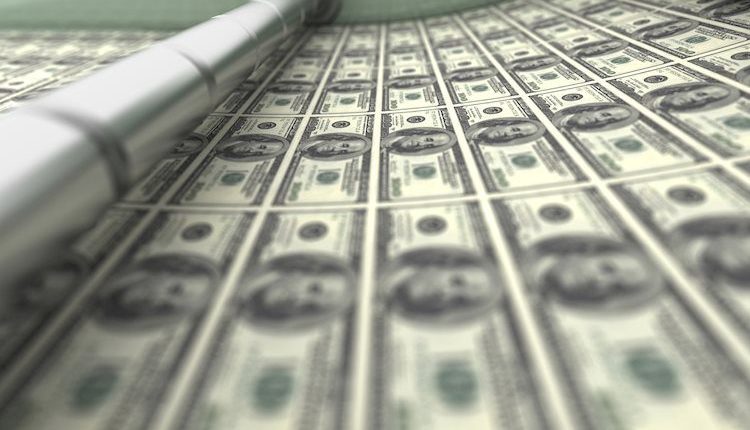- DXY holds gains around 106.00 after Fed’s Bullard comments.
- US CPI data showed inflation in October rising by 2.6%, in line with estimates.
- Core CPI rises by 3.3%, exceeding expectations and driving US yields higher.
The US Dollar Index (DXY), which measures the value of the USD against a basket of six currencies, has surged higher on Wednesday in response to hawkish comments from Federal Reserve (Fed) officials. Dallas Fed President Robert Kaplan expressed caution regarding the possibility of a December rate cut, dampening expectations that had been building in the market. The DXY has climbed above 106.00, reaching a fresh six-month high as a result of these comments but mildly retreated after Consumer Price Index (CPI) data from October, which didn’t show major surprises.
Daily digest market movers: US Dollar holds gains after US CPI
- The DXY is experiencing a mild corrective decline after the release of US CPI data for October.
- The DXY is hovering around 105.80, supported by a marginal retracement in US yields across the curve.
- The Bureau of Labor Statistics reported that the headline CPI rose by 2.6% YoY last month, matching prior forecasts.
- Core CPI, which excludes food and energy, increased by 3.3% over the last 12 months.
- The Fed members are cooling down the market’s expectations of the central bank’s aggressive easing cycle, but investors are quite confident of another 25 bps cut in December.
DXY technical outlook: Bullish momentum continues for Greenback
Despite a slight pullback on Wednesday, technical indicators for the DXY Index remain bullish, suggesting a potential continuation of the uptrend. The RSI and MACD indicate continued positive momentum. While consolidation or a pullback is possible before a further advance, the overall technical outlook remains positive with resistance levels at 106.50, 107.00 and 107.30 and support levels at 105.50, 105.30 and 105.30.
That being said, the DXY’s surge above 106.00, approaching its highest level since July, is supported by positive indicators. However, the indicators are approaching overbought territory, indicating a potential reversal or consolidation. Traders should monitor the index’s behavior around these levels to assess the sustainability of the uptrend. A rejection at the overbought area could signal a pullback or a change in market sentiment, while a sustained break above these levels could extend the bullish momentum.
Central banks FAQs
Central Banks have a key mandate which is making sure that there is price stability in a country or region. Economies are constantly facing inflation or deflation when prices for certain goods and services are fluctuating. Constant rising prices for the same goods means inflation, constant lowered prices for the same goods means deflation. It is the task of the central bank to keep the demand in line by tweaking its policy rate. For the biggest central banks like the US Federal Reserve (Fed), the European Central Bank (ECB) or the Bank of England (BoE), the mandate is to keep inflation close to 2%.
A central bank has one important tool at its disposal to get inflation higher or lower, and that is by tweaking its benchmark policy rate, commonly known as interest rate. On pre-communicated moments, the central bank will issue a statement with its policy rate and provide additional reasoning on why it is either remaining or changing (cutting or hiking) it. Local banks will adjust their savings and lending rates accordingly, which in turn will make it either harder or easier for people to earn on their savings or for companies to take out loans and make investments in their businesses. When the central bank hikes interest rates substantially, this is called monetary tightening. When it is cutting its benchmark rate, it is called monetary easing.
A central bank is often politically independent. Members of the central bank policy board are passing through a series of panels and hearings before being appointed to a policy board seat. Each member in that board often has a certain conviction on how the central bank should control inflation and the subsequent monetary policy. Members that want a very loose monetary policy, with low rates and cheap lending, to boost the economy substantially while being content to see inflation slightly above 2%, are called ‘doves’. Members that rather want to see higher rates to reward savings and want to keep a lit on inflation at all time are called ‘hawks’ and will not rest until inflation is at or just below 2%.
Normally, there is a chairman or president who leads each meeting, needs to create a consensus between the hawks or doves and has his or her final say when it would come down to a vote split to avoid a 50-50 tie on whether the current policy should be adjusted. The chairman will deliver speeches which often can be followed live, where the current monetary stance and outlook is being communicated. A central bank will try to push forward its monetary policy without triggering violent swings in rates, equities, or its currency. All members of the central bank will channel their stance toward the markets in advance of a policy meeting event. A few days before a policy meeting takes place until the new policy has been communicated, members are forbidden to talk publicly. This is called the blackout period.
Read the full article here

